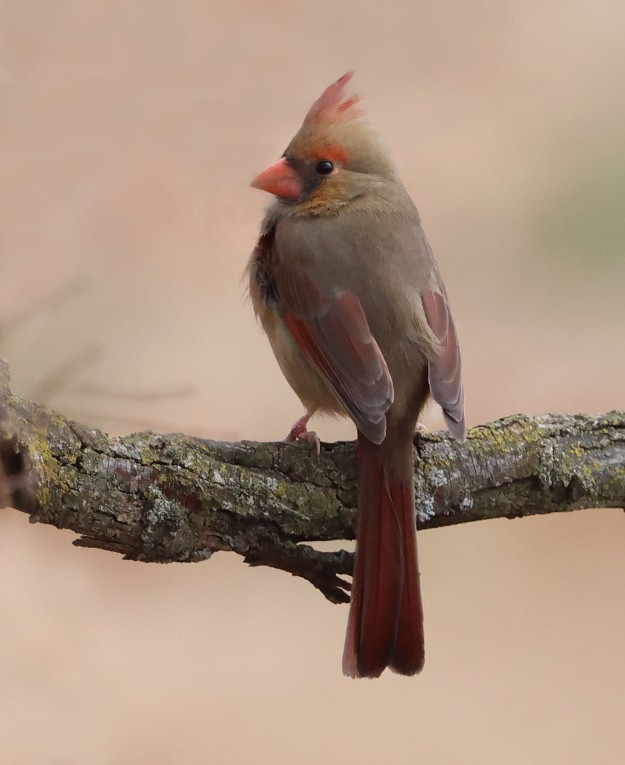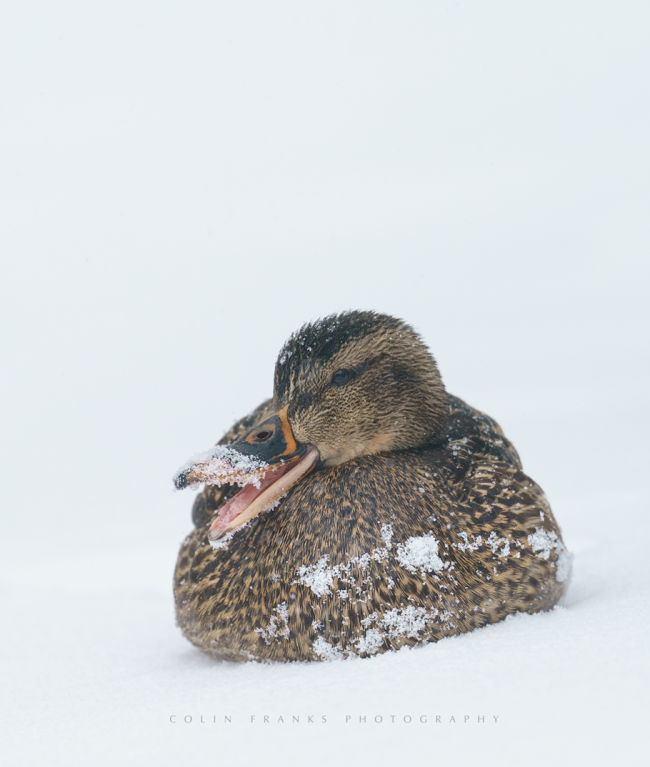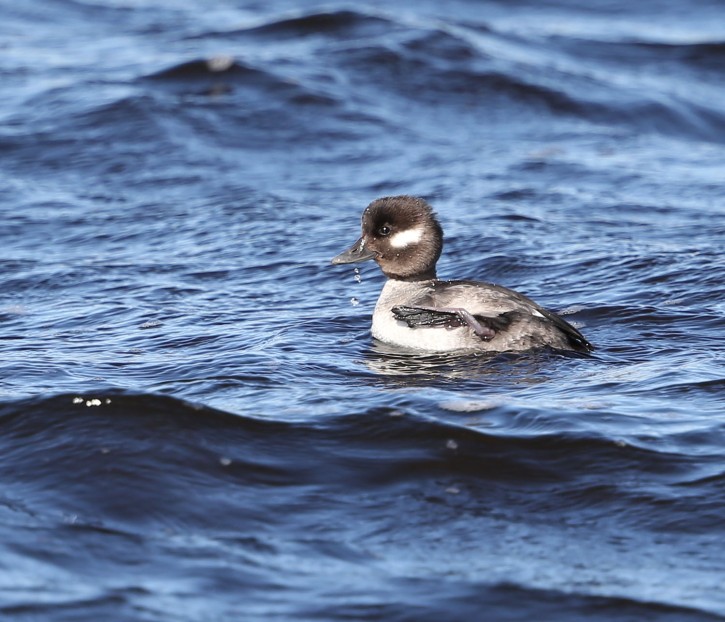The last blog didn’t go over too well. Such is life. I imagined some saying, “What does ‘Water Sources and Winter Light’ even mean”? If the title had been catchier or if I had worded it something like, “How to Take Advantage of Water Sources and Winter Light,” the blog might have attracted more interest. Catchy titles and those “How to” or “7 Steps to” or “5 Tips for” titles—or just about any title with “Here’s How”—always seem to work. Others, maybe not so much. Having said that, I’m still very grateful to have the readers I have. I started out with 30 in April of ’18.
If you haven’t read “Water Sources and Winter Light,” please do. It’s about harnessing a knowledge of birdlife and winter light to take better photos. Of course, you could skip my words altogether and just read those of Josh Allen and then click on the links at the end, including the “5 Tips for” link. But click on the “foam kneepads” link, too. Those new kneepads really help and make the job of getting down low for eye-level shots much easier—and less messy. Did you know that some of the sideline photographers at the Superbowl wore kneepads? I’ll bet you didn’t.
Female Northern Cardinal
Before I lose some of you (and get lost myself), here’s a recent capture. I wasn’t thinking about winter light, and the bird wasn’t near a water source, but everything seemed to fall into place in the moments before I hit the shutter. It was morning, the bird was out in the open and at eye level, and the background was distant with good color. I like how the photo highlights the bird’s warm browns and reds. Bright red male Northern Cardinals might get all the attention, but females, like this one, have a beauty all their own.

Female Eastern Bluebird
That’s true of so many female birds, including female Eastern Bluebirds. Sky-blue and rusty-breasted males might get all the attention, but females like the one below deserve that attention, too. The photo may be busy, but the subject still carries the composition, even if just barely. We’ve seen a few photos like that here. With this one, I was taking advantage of winter light. And that low-angle, and in this case, frontal light really helped make the shot and bring out the female’s colors. To borrow from Stevie Wonder, “Isn’t she lovely.”

Female American Wigeon
While we’re discussing female birds, here’s another charmer that often gets overlooked. This is a female American Wigeon. I captured her as she and her mate were gliding along the surface of Pinchot Lake back in November. Light played a big role here, too. I know I’ve said this before, but sometimes the search for light is every bit as important as the search for subjects. It’s often, “Where’s some good light…OK, now, where’s a good subject?”

Female Mallard
Here’s a great subject and another distinguished one. This is a female Mallard, courtesy of Colin Franks. Colin is a gifted photographer whose work I’ve included here from time to time. Another advantage to shooting in winter (if there’s snow cover) is that snow can work as a backdrop. It’s certainly an effective backdrop here. Colin also did a masterful job exposing for the bird without overexposing and losing the snow. I like the elements of whimsy and intrigue. Re: intrigue—what was the hen doing before Colin took the photo? For that matter, what’s she doing now, and where on earth is she?

Female Swamp Sparrow?
The photo reminds me of another one I took of the foraging Swamp Sparrow. The snow worked as an effective backdrop here, too (at least for the sparrow’s underside).

All the species above except the Swamp Sparrow are strongly sexually dimorphic/different (for much of the year, anyway). It’s easy to tell the 2 sexes apart. Swamp Sparrows are dimorphic, too, but in their case it’s hard to distinguish male from female. The female is slightly smaller, and in breeding plumage she’s a little drabber. Though this is a tough one, I’m going to call the bird above a female. I don’t have any proof but just a sixth sense that she is. Maybe it’s those legs.
And This Just In
When female birds are overlooked, conservation suffers. That’s the title of a spring 2020 Audubon Magazine article about female birds that is well worth reading. In that piece, you’ll also learn about the Female Bird Song Project.
If you’re interested, this is my “spark female.” I captured her a few years ago in a tributary of Chesapeake Bay.

Here are the advantages to shooting in winter that we’ve come up with so far:
- The lower angle of the sun during the winter months means more opportunities during the day to take photos in great light.
- Wildlife is hungry, food is scarce, and feeding wildlife is more approachable. The trick here is to find good food sources. Look for good water sources, too.
- Snow cover can work as an effective backdrop. Snow in the background often makes a scene less cluttered and can serve to highlight and draw viewers’ attention to the subject.
Quip, Question, Quote
Here’s another “avian quote.” We noted in the last blog that Song Sparrows are one of our earliest singers. This one started singing around 2/15 in our backyard in south central Pennsylvania. Listen closely and you’ll also hear a Mourning Dove and a female Northern Cardinal.
Nice set. Females are often overlooked but I think they are lovely and interesting all on their own.
LikeLike
Totally agree, Tammy. Thanks for reading.
LikeLike
I agree! One of my favorites is the female Eastern Towhee.
LikeLike
Thanks, Dean. I agree about the female towhee. Now I’ll have to be on the lookout for one.
LikeLike
I agree with Tammy. I have always thought female Cardinals are just as beautiful as their male counterparts. Another bird outside of North America that has a stunning female is the Barred Antshrike.
LikeLiked by 1 person
I read your last post! 😊 These bird photos are fabulous! I love taking photos of any bird, my challenge is finding them! Beautiful female birds❣
LikeLike
Thanks, Lisa.
LikeLiked by 1 person
Sorry, Dave. I’ve missed a few posts as I’ve been busy on an art project. I can’t wait to get back out there. Your photo of the female Red Cardinal is beautiful. The light is so soft and intimate, showing her off to perfection.
LikeLike
No problem, and you’re always welcome. What sort of art project? Glad you liked the photo. I got a little lucky there.
LikeLike
I do mosaics, Dave. I used to do a lot of bird ones but I’ve branched out.
You are too modest.
LikeLike
Interesting. Would love to see a photo of one at some point. I used to deal in antiques and collectibles. I had a customer who would buy old china plates that had cracked or were broken. She’d use them to make mosaics. I thought that was pretty cool.
LikeLike
If you search “Birds of Tile and Feather” on my site, Dave, you’ll come across a sample.
LikeLiked by 1 person
Loved those, Tracy. Wow.
LikeLiked by 1 person
Thank you, Dave.
LikeLiked by 1 person
Thanks for these tips and beautiful photos, Dave. The bluebirds have been abundant at Pinchot lately, haven’t they!? I do love the delicate beauty of female birds. Can you give me advice on how to expose for birds without letting bright snow or water overwhelm the photo?
Thanks!
Jady
LikeLike
Thanks, Jady, Yes, bluebirds seem to be everywhere. You should see them all at Lower Allen Community Park (many dead trees, nest boxes, etc.). Those high contrast scenes are tough. I included this link, which might be helpful, in the last blog: https://www.naturettl.com/5-tips-for-photographing-wildlife-in-the-snow/. Here’s another article from my notes that might be helpful: https://digital-photography-school.com/photography-in-the-winter-season/. I always tell folks don’t worry if you blow out some of the snow (but not all). Your image won’t suffer as long as the subject still looks good. I also always recommend keeping an eye on the histogram to make sure an image is balanced and that there’s still detail in the bright parts. Never rely on what you see on the LCD screen or in the viewfinder. Another trick is to only photograph when things are less contrasty: early and later in the day. Here are some more tips, like using fill flash: https://digital-photography-school.com/7-ways-to-handle-high-contrast-scenes/. I hope all this helps!
LikeLike
We don’t have cardinals or bluebirds Dave so I loved the sensitive photographs here that bring out those subtle colours – the lovely rose colours in the cardinal and the blues and browns of the bluebird.
LikeLike
Thanks, Andrea. I’m not trying to take credit here, but ‘sensitive’ is a great descriptor. I knew you’d love those kinds of photos.
LikeLiked by 1 person